DownBeat magazine kicked things off in January with a cover headline: “1917: The Year that Changed the Course of Jazz History.” Feature articles followed on each centennial artist. From my vantage point in Washington, DC, I noted year-round activity at the Kennedy Center with two centenary tributes to Ella and one each for Monk and Dizzy. The Smithsonian Institute held two Ella tributes and five more were held at local jazz venues.
The Apollo Theater in Harlem appropriately celebrated Ella for her breakout performance there in 1935. Ella and Dizzy were honored together at the James Moody Jazz Fest in Newark, New Jersey, and at the PDX Jazz Fest in Portland, Oregon, while the music of Ella, Dizzy, Mongo, and Monk was celebrated at the Symphony Center in Chicago and at the Newport Jazz Festival.
Jazz at Lincoln Center launched a “100 Years of Jazz” series, and a Jazz@100 Conference was held at Darmstadt, Germany. It was a very good year for jazz locally, regionally, nationally, and globally.
John McDonough of DownBeat summed it up this way:
One hundred years ago, jazz was captured on commercial recordings for the very first time, suddenly projecting the music’s reach from the back of the bar to the ends of the earth. [1]
The yearlong celebration of this singular moment focused a brighter than usual spotlight on the monumental jazz artists that were born in 2017. And that’s a good thing.
Original DixieLand Jazz Band (ODJB)
| Jazz: The Smithsonian Anthology box set is expensive but worth it. Disc 1 has “Livery Stable Blue” by the ODJB and 1920s jazz tracks to compare and contrast. January 1917 found five New Orleans musicians Nick LaRocca (trumpet, director), Eddie Edwards (trombone), Larry Shields (clarinet), Harry Ragas (piano), Tony Sbarboro (drums) working a two-week engagement at Reisenweber’s Cafe in New York City. The music was loud and rowdy, variously described as having jagged contours and nervous energy, and unlike anything the city had ever heard. A novelty to be sure, the band drew ordinary folk and musicians from near and far and became the first to record the emergent New Orleans music. |
Within a few days, the 78 rpm disc hit the streets, and driven by the latter tune, sales eventually soared to over a million copies. The ODJB’s popularity soared as well.
With LaRocca leading the way, historian Richard M. Sudhalter tells us:
The ODJB capitalized on its momentum. No one, if he had anything to do with it, would ever be allowed to forget that these five musicians were the first to put genuine hot music on records . . . Would that he had left it at that. In later years . . . he took another tack in a flood of letters, magazine articles, and in personal interviews he accused younger, more prominent musicians of trying to “cash in on his jazz craze started by the Original Jazz Band.” He also expressed contempt for anyone who tried to credit black jazzmen with any part of the creative process. [2]
Yet, as Bruce Boyd Raeburn has written:
Comparison of “Livery Stable Blues” with recordings made by Kid Ory in 1922, by the New Orleans Rhythm Kings in 1922-23, and by King Oliver’s Creole Jazz Band in 1923 reveals common idiomatic features: an instrumental playing style couched in small band polyphony and collective “improvisation” (often relying on “head arrangements” worked out in advance) that used stop-time breaks, an insistent 4/4 rhythmic pulse, and a spirit described by one music critic as “Rabelaisian jocosity.” [3]
Moreover, and lest we not forget, as John McDonough wrote in DownBeat:
The band laid the cornerstone of the first important repertoire unique to jazz, a canon of songs developed at Reisenwebers in 1917 and still basic to all traditional jazz: “Tiger Rag.” “At the Jazz Band Ball,” “Clarinet Marmalade,” “Fidgety Feet,” “Jazz Me Blues,” and “Royal Garden Blues.” All originated with the ODJB. [4]
Ella Fitzgerald
Ms. Fitzgerald’s visage appears on my imaginary female jazz singer Mount Rushmore. Her three-octave range, flawless diction, high wire scatting, and girlish tone made every Great American songbook rendition definitive.
Frank Sinatra had this to say:
Ella Fitzgerald is the only performer with whom I’ve ever worked who made me nervous. Because I try to work up to what she does. You know, try to pull myself up to that height, because I believe she is the greatest popular singer in the world. Barring none—male or female. [5]
Between 1956 and 1964, Fitzgerald recorded her songbook series on Verve Records, an album each to the songs of Cole Porter, Rodgers and Hart, Duke Ellington, Irving Berlin, George and Ira Gershwin, Harold Arlen, Jerome Kern, and Johnny Mercer, orchestrated by top flight arrangers Buddy Bregman, Paul Weston, Billy May, Nelson Riddle, and Duke Ellington/Billy Strayhorn.
Simply stated, over an eight-year period, Ella illuminated better than anyone the songs of the top seven composers of the Great American Songbook. [6]
These albums have been gathered in a highly recommended box set (16 CDs, 345 tracks) that deserves to be prominently displayed in Tiffany’s window on Fifth Avenue in New York City. If the Tiffany collection is too steep for your pocketbook, then I recommend my personal favorite Ella Fitzgerald Sings the Cole Porter Songbook, which coincidentally, according to two sources, is the 36th and 55th all-time best jazz album ever. [7]
At live performances in clubs and concert halls, a piano trio or quartet usually supported the “first lady of song.” My personal favorite album is Ella in Berlin backed by the Paul Smith Quartet (Smith piano, Jim Hall guitar, Gus Johnson drums, and Wilfred Middlebrooks bass). Ella’s voice is earthier than usual, while her phrasing is as appealing as ever. She’s sublimely tender on Errol Garner’s “Misty,” romantically so on “The Man I Love” and the “Lorelie,” and wonderfully sultry on “Too Darn Hot.”
This recording is famous for her scats, a planned lengthy one on “How High the Moon” and an unplanned one after forgetting the words to “Mack the Knife”—the singer improvised a stealthy camouflage that included an impersonation of Louis Armstrong.
And if you like your Songbook composers live, Ella covers four Gershwin and three Porter songs, as well as one each from Arlen/Mercer, and Rodgers and Hart.
Thelonious Monk
Last year we celebrated the 100th anniversary of guitarist Charlie Christian, the first charter member of bebop’s birthplaces in Harlem, Monroe’s Uptown, and Minton’s Playhouse. This year we pay tribute to two other members, Thelonious Monk and Dizzy Gillespie.
Monk would become the most idiosyncratic and singular of the early beboppers and one of jazz’s great composers. With its dissonances, its herky-jerky syncopations, and its child-like melodies, his music always swung in its own unorthodox way.
While the pianist occasionally performed in a trio setting, and sometimes in larger groups, he is probably best known for his work in quartets and quintets alongside outstanding tenor sax players like Coleman Hawkins, John Coltrane, Sonny Rollins, Johnny Griffin or Charley Rouse. Most aficionados and critics would likely point to his encounters with Coltrane and Rouse as most noteworthy.
My personal favorites are his collaborations with tenor titans Rollins and Griffin and, in the case of the former, from a critically scorned session that occurred on Friday the 13th. And who in their right mind would ever book a studio for that date? Prestige Records A&R man Ira Gitler did, and, no surprise, the jinx held.
Monk wanted two prominent musicians, tenor man Sonny Rollins and trumpeter Ray Copeland on the date, but Copeland came down with the flu, and French Horn player Julius Watkins, who had never played with Monk and had only recorded a few times in a jazz context, was asked to sub.
To top it off, Monk and Rollins arrived at the studio an hour late—their taxi had skidded into a police vehicle, resulting in the loss of precious studio time. The aforementioned musicians joined outstanding bassist Percy Heath and left-handed drummer Willie Jones, a Monk pick who had never made a record before.
In the remaining studio time left, the quintet recorded three new Monk compositions “Think of One,” “Let’s Call This,” and appropriately “Friday the 13th.” And if you think the first two tunes got their titles from Monk’s inability to come up with more appropriate titles, you’d be right.
“Friday the 13th” was written on the spot and based on a simple four-bar repeating phrase—not because Monk had written it as such, but because A&R man Ira Gitler, aware of the limited studio time, kept frantically waving a hastily handwritten sign that read “MORE” to extend the number to 10:35 minutes.
Prestige released the tunes on an LP titled Thelonious Monk Blows for LP in March 1954. The tracks recorded that superstition-laden day did not become jazz standards as so many other Monk compositions have. Album sales were feeble, reviews were even worse, none of the tunes lit up the charts, and Monk languished in obscurity for another three years. [8]
So what’s to like? Simply, the music produced by three jazz greats at the start of their careers. Sonny Rollins is roundly considered to be one of the top five on tenor saxophone in jazz history. Monk is roundly considered to be among the top five jazz composers ever. And Julius Watkins is the founding father of jazz French horn.
Perhaps, on Monk’s centenary, a reexamination of his mid-1950s music on the Prestige label is in order, including that produced on that most inauspicious day back in 1953.
Likewise, the composer-pianist’s centenary would also be a good time for fans of Monk’s famed Five Spot encounter with tenor titan John Coltrane to reexamine his get-together with another tenor giant at the same venue: Johnny Griffin. His mastery of the horn is exceptional, top to bottom, sounding at times like an alto, sounding like no other, and always, always, swinging.
John Birks “Dizzy” Gillespie
Bebop was an upheaval in jazz that matched the arrival of Louis Armstrong, Duke Ellington,
Coleman Hawkins, and Lester Young, but it was not, as it is frequently taken to be, a total musical revolution . . . To be sure, it introduced radical techniques, but it stuck close to the blues, which it dressed up with flatted chords and various rhythmic furbelows. The chord structure of popular standards, which provided the rest of its diet, were slightly altered, and were given new titles . . . The music made little attempt at fresh ensemble voicings, but relied instead on complex unison figures. [9]
I’m not sure that Dizzy has ever been given his proper niche in jazz . . . I don’t think that people really understand the contributions he’s made . . . He was the first one that introduced the Cuban rhythm section. I’m not sure Dizzy isn’t more important than Bird. That discussion seems to go on. I think Bird was an incredible soloist, but so was Dizzy. Bird had a big impact, but so did Dizzy. [10]
Gillespie not only introduced Cuban rhythms but continued to employ them (along with other Latin ones) while maintaining close and fruitful collaborations with Afro-Cuban and Latin musicians through the end of his days.
Without question, Dizzy was the major spokesperson for bebop and the best-known jazz trumpeter after Miles Davis and Louis Armstrong. Miles was not present at the creation of bebop, but joined the movement shortly thereafter, playing and recording with Bird.
Miles’s career took off in the mid-1950s, and he became the most talked about jazz trumpeter from the late 1950s through the 1980s, overshadowing at times the doings of the bebop master.
While Davis helmed two great quintets, featuring the likes of star players like John Coltrane, Cannonball Adderley, Bill Evans, Herbie Hancock, Wayne Shorter and Tony Williams, he formed orchestral collaborations with Gil Evans to back his soulful trumpet voice, and then shocked the jazz world when he abandoned the acoustic format for electric-powered rock and roll.
But so did Diz, in his own way, and to a lesser extent, but no matter—somehow it didn’t seem to warrant the same coverage.
Gillespie collaborated several times with skilled orchestral composers and arrangers, notably once with J. J. Johnson for Perceptions, a six-movement suite during which Dizzy improvised over a brass choir, and two with Lalo Schifrin, Gillespiana (premiered at Carnegie Hall in 1961) and The New Continent (premiered at the Monterey Jazz Festival in 1962 and later that same year at New York Philharmonic Hall).
The New Continent, a personal favorite, reflected the composer’s use of music from Spain, Africa, and America, to create a challenging multi-metered bedrock to support Gillespie’s fanciful excursions on his instrument.
In the 1970s Gillespie hooked up again with his long-term producer Norma Granz on his newly formed Pablo label. After several pairings with jazz masters from his era (altoist Benny Carter, pianist Oscar Peterson) Diz implored producer Granz to put aside all these “history” recordings, and let him record something “modern.” [11]
The result: Dizzy’s Party: a hip-shaking Latin jazz album for funk fans, with two electric guitars, drums, and percussion to support trumpet and saxophone. Granz himself concluded:
This album is Dizzy’s first dance album–yes, I said dance. But a very hip kind of dancing . . . He, also, uniquely combines once again Brazil and its rhythms (in the person of Paulinho da Costa [on Percussion]) with Jazz Time. [12]
The result: In a Silent Way, Bitches Brew, On the Corner, and others, controversial albums in some quarters, well received in others, but still better known than Dizzy’s Party. A record James Brown could have danced to.
The point here: Miles is well known for being a musical shapeshifter—just when you think you know his music, begin to love it, he’s on to something else.
But Dizzy evolved as well. He emerged from the bebop cocoon he created with Charlie Parker, adding rhythmic elements from around the world, fattening his tone, streamlining his lengthy, multi-noted improvisations in a variety of contexts (combos and large orchestras) to fit the times.
Oh, and by the way, Diz and Lalo reunited a year after Dizzy’s Party on Free Ride, a Pablo album composed and arranged by his old partner for a 14-piece orchestra that employed electrical keyboards, electric guitars, and Fender Rhodes piano. Schifrin’s slow-rock arrangement on “Unicorn” created a near hit. [13]
Eat your heart out, Miles Davis.
Mongo Santamaria
In the jazz world, Santamaria is mostly known for (1) his version of Herbie Hancock’s tune “Watermelon Man,” which became a Top 10 hit in 1963, and (2) his authorship of “Afro-Blue,” a song saxophonist John Coltrane made famous.
One night when Herbie Hancock substituted for Mongo’s regular pianist at a Bronx nightclub, his group worked out a Latin groove underneath Herbie’s new composition “Watermelon Man.” Santamaria quickly recorded it, and the song became the only time that Riverside, a distinguished jazz label, had a song on the Top 10 pop charts. [14] In 1998, Mongo’s “Watermelon Man” was inducted into the Grammy Hall of Fame.
See my book Serendipity Doo-Dah: True Stories of Happy Musical Accidents for more details on how a hard bop, gospel roller (“Watermelon Man”) by an anonymous young jazz pianist (Herbie Hancock) ended up being covered by a small-market Latin band by an obscure Afro-Cuban percussionist (Mongo Santamaria) to become so popular it was covered by hundreds of other bands and thereby enriching both musicians. [15]
Buddy Rich
Here I must admit to a jazz character flaw, and offer my apologies to Mr. Rich’s many fans. I do not have a single LP or CD by the drummer and not one where he appears as a sideman. Moreover, if I were to list my Top 20 favorite jazz drummers, Mr. Rich’s name would not appear. Apologies to one and all.
- John McDonough, “Dizzy, Ella, Buddy & Monk: The Year that Changed the Course of Jazz History,” DownBeat, January 2017, 5.
- Richard M. Sudhalter, Lost Chords: White Musicians and Their Contributions to Jazz, 1915–1945 (New York: Oxford University Press, 1999), 16.
- Liner Notes, Bryce Boyd Raeburn, “Original DixieLand Jazz Band,” Jazz: The Smithsonian Anthology (Smithsonian Folkways Recording, 2010), 27.
- John McDonough, “Dizzy, Ella, Buddy & Monk,” DownBeat, January 2017, 29.
- James Kaplan, Frank Sinatra: The Chairman (New York: Anchor Books, 2015), 214.
- Some 17 years later, in 1981, another, and the last of the series was added: Ella Abra Jobim: Ella Fitzgerald Sings the Antonio Carlos Jobim Songbook, on Pablo Records.
- According to Jazzwire and New Yorker magazines, respectively.
- Edward Allan Faine, Serendipity Doo-Dah: True Stories of Happy Musical Accidents (Takoma Park, Maryland: IM Press, 2016), 50–53.
- Whitney Balliett, Whitney Balliett Collected Works: A Journal of Jazz, 1954–2001 (New York: St. Martin’s Griffin, 2002), 84.
- Tad Hershon, Norman Granz: The Man Who Used Jazz for Justice (Berkeley, CA: University of California Press, 2011), 131.
- Personal recollection.
- Back cover notes, Dizzy’s Party, Dizzy Gillespie Sextet, Pablo Records, 1977, LP.
- Dizzy Gillespie with Al Frazer, To Be or not . . . to Bop (New York: Doubleday, 1979), 522.
- Ben Ratliff, “Mongo Santamaria, 85, Influential Jazz Percussionist, Dies,” New York Times, February 3, 2003.
- Edward Allan Faine, Serendipity Doo-Dah, 72–74.


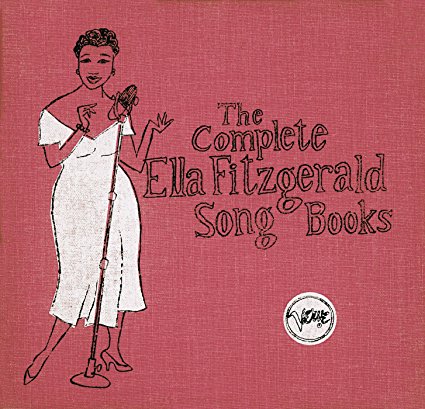
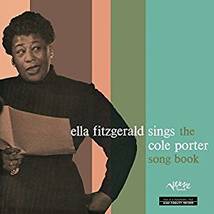
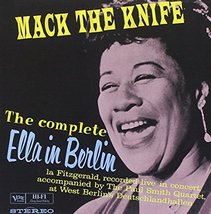

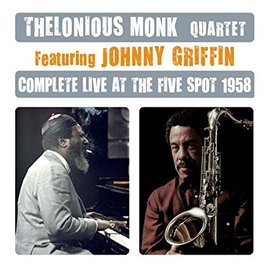
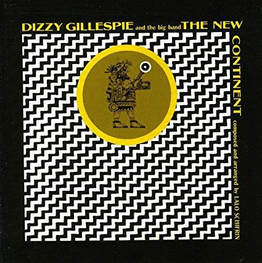
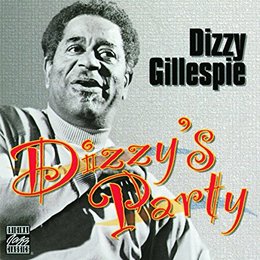
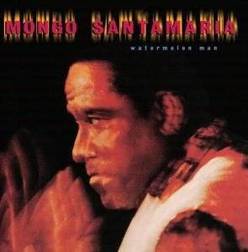
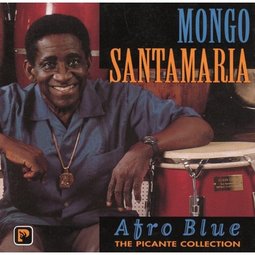

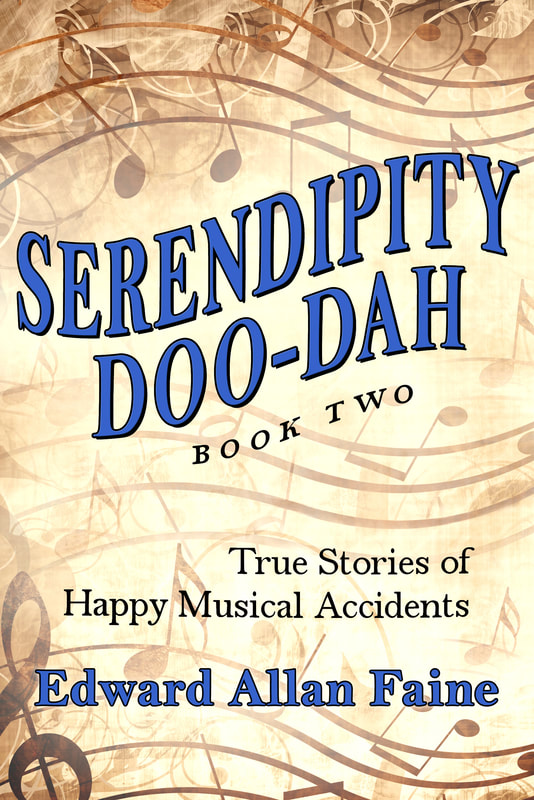

 RSS Feed
RSS Feed